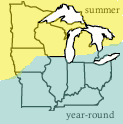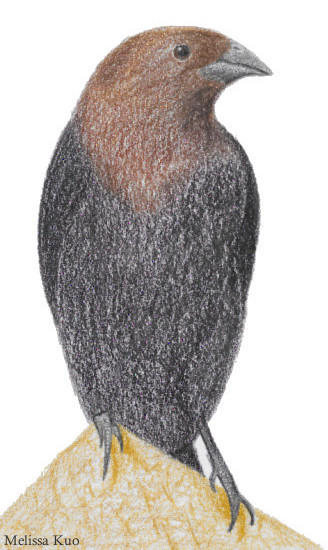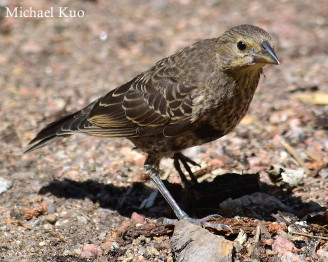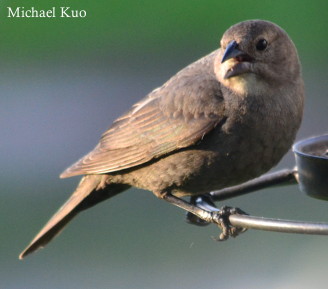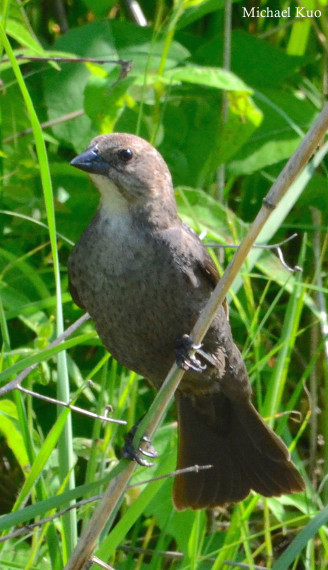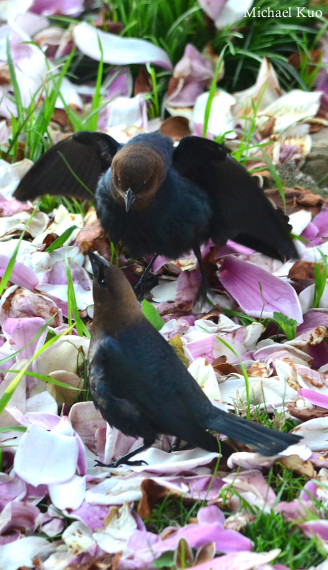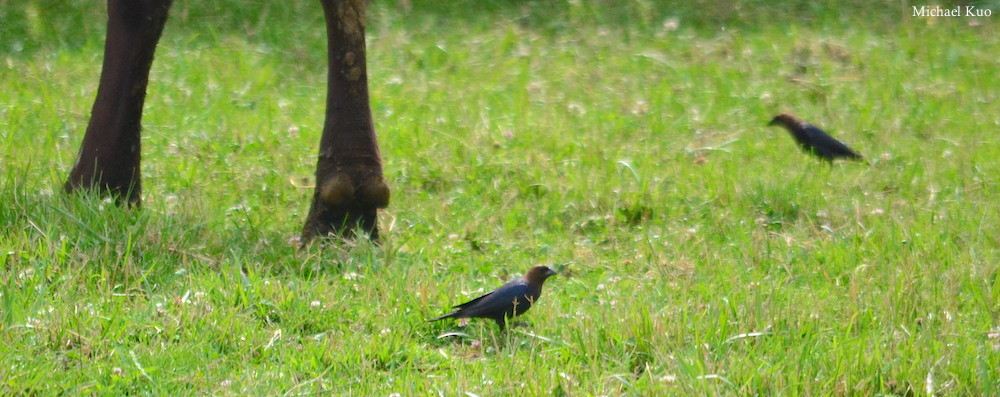 Molothrus ater (brown-headed cowbird) |

|
|
Widespread and common in the Midwest, this fascinating bird can be seen at feeders, in open rural settings, and occasionally in woods. Adult males are easily recognized, while females and juveniles can be more challenging. Brown-headed cowbirds have evolved as "brood parasites," which basically means they are a pain in the neck for other birds, since they breed often and lay their eggs in other birds' nests—then disappear, leaving the "host" parents to raise their chicks. Have you seen Dinosaur Train on PBS? In the introduction, young Tyrannosaurus Buddy wonders, "What am I doing in a pteranodon nest?" The show is in part a parable of the complications often involved in contemporary human families, and Buddy is accepted and loved by his Pteranodon parents and siblings; Mrs. Pteranodon replies, "This is your family, and I'm your mom." Research has documented more than 200 species of birds that have been "asked" to raise brown-headed cowbird hatchlings. Fortunately for baby cowbirds, more than 140 of these species have, like Mrs. Pteranodon, actually accepted the job. When hosts reject the cowbird eggs (often the case with kingbirds, robins, catbirds, and waxwings), they can eject the unwanted eggs, bury them, or abandon the nest entirely. |
|
|
|
Features Adult males look like blackbirds or small grackles, but with brown heads. The brown area has a soft, velvety appearance, and extends down the neck and throat, where it makes a shallow, rounded V. Almost everything else is black: the thick, downcurved beak; the legs and claws; and the body and tail. Only the beady little eyes are not black; the iris is very dark brown. In sunlight the glossy, black plumage can appear to have a greenish to purplish or bluish sheen. Adult females are grayish brown, with whitish to very pale gray throats and thick, black bills. The breast is usually finely streaked with darker brownish gray. The eyes are beady and very dark Juveniles are gray to grayish brown, with extensive streaking on the breast. The stout bill is black above and yellowish to pale brownish below. The eyes are beady and dark. Displays Two frequently seen cowbird displays are known as the "bow" and the "bill-tilt." The bow display, illustrated in the photo below by the bird with its wings spread, is performed by males in courtship displays and in dominance displays. The bill-tilt display, illustrated by the foreground bird in the same photo, and by the female in the illustration at the top of the page, is thought to be a dominance display. Sounds In our experience the two most frequently heard brown-headed cowbird sounds are its song and its chattering call. The song is a bubbly, liquid series of "glugs" and higher-pitched components; the chattering call, used primarily by females, is a rapid-fire series of short vocalizations. Habitat Brown-headed cowbirds usually inhabit open spaces—fields, lawns, pastures, and the edges of woods—and are frequently seen foraging and socializing on or near the ground, although they also like to perch in high places. They are fairly gregarious, and in the fall they often flock with blackbirds and starlings. |
|
|
|
|
|
References: Peterson 1980, Lowther, P. E. (1993) in Rodewald 2017; Dunn & Alderfer 2009, Sibley 2014, Retter 2017. Kuo, Michael & Melissa Kuo (July, 2017). Molothrus ater (brown-headed cowbird). Retrieved from the midwestnaturalist.com website: www.midwestnaturalist.com/molothrus_ater.html All text and images © , midwestnaturalist.com. |
